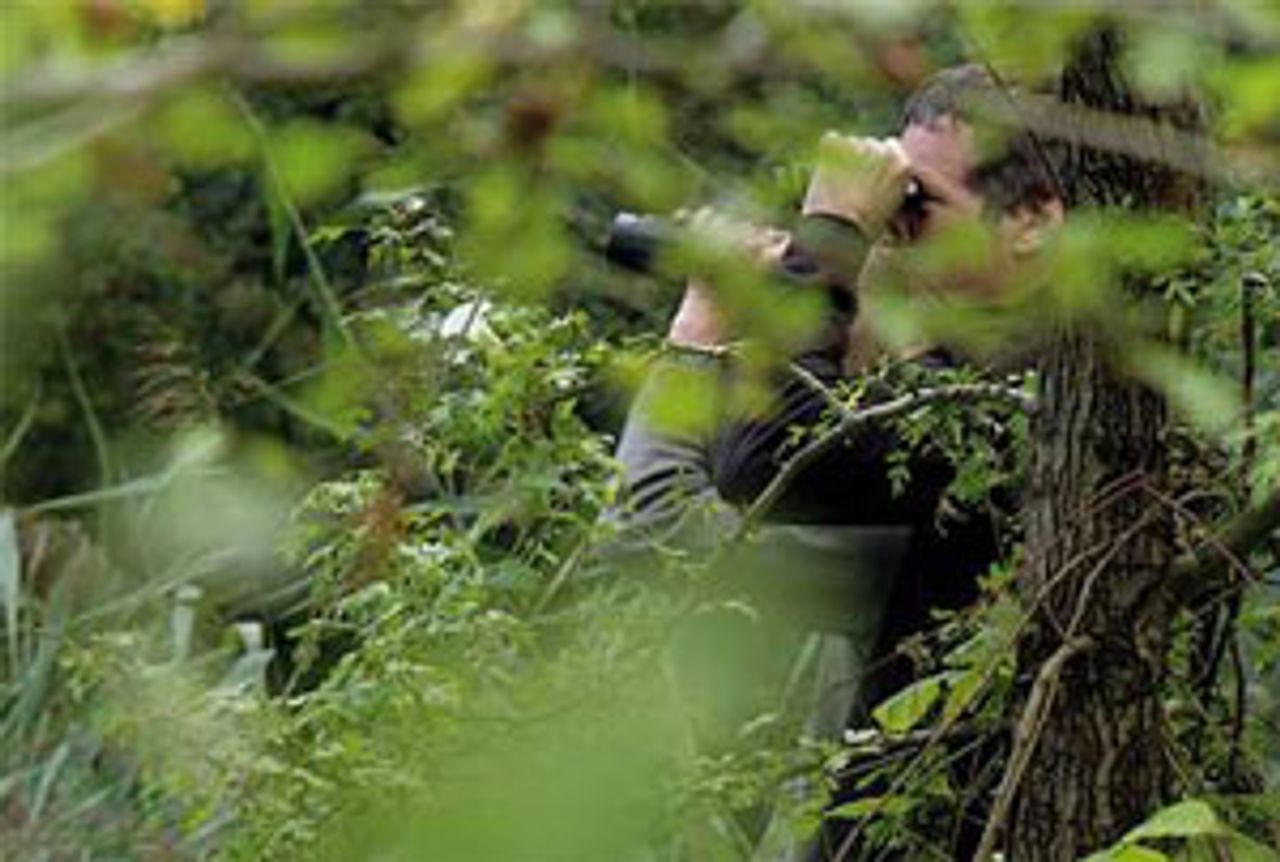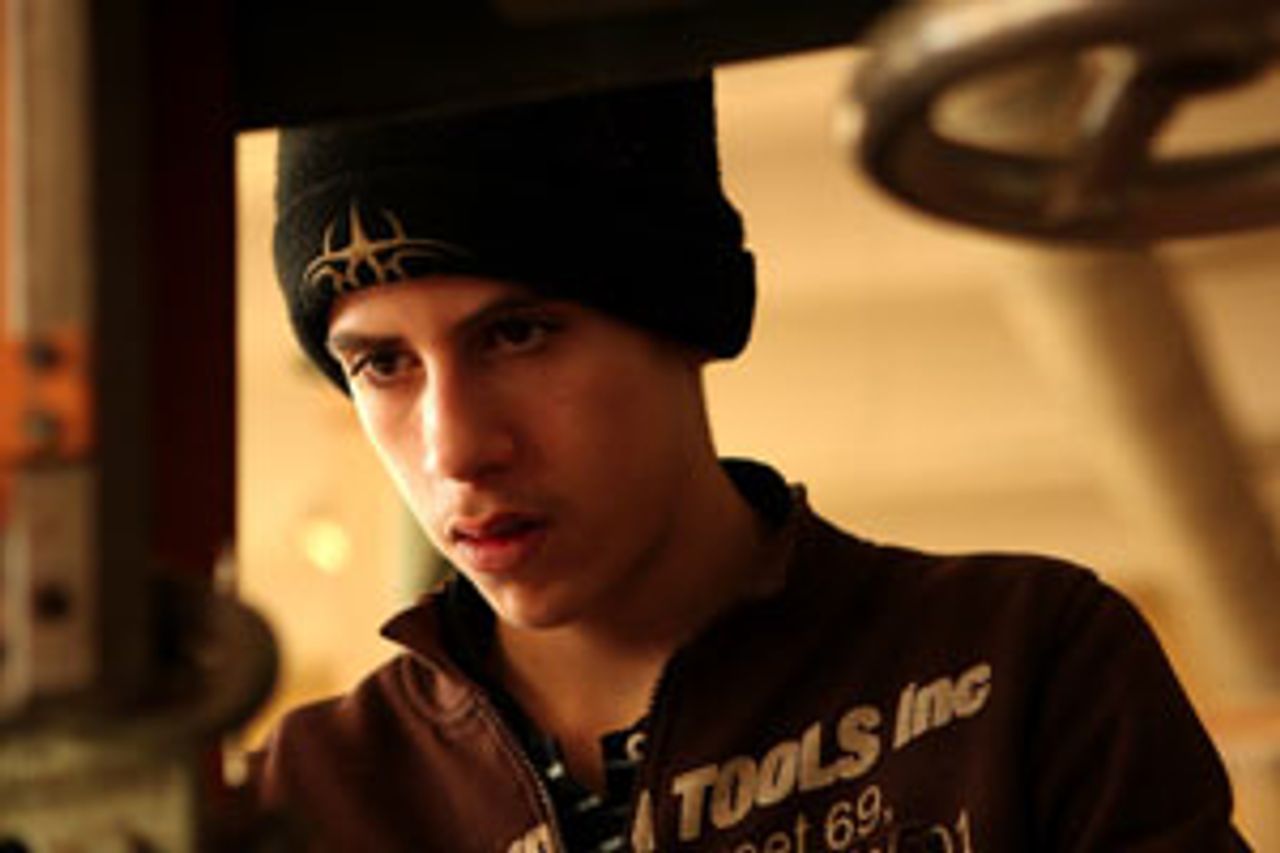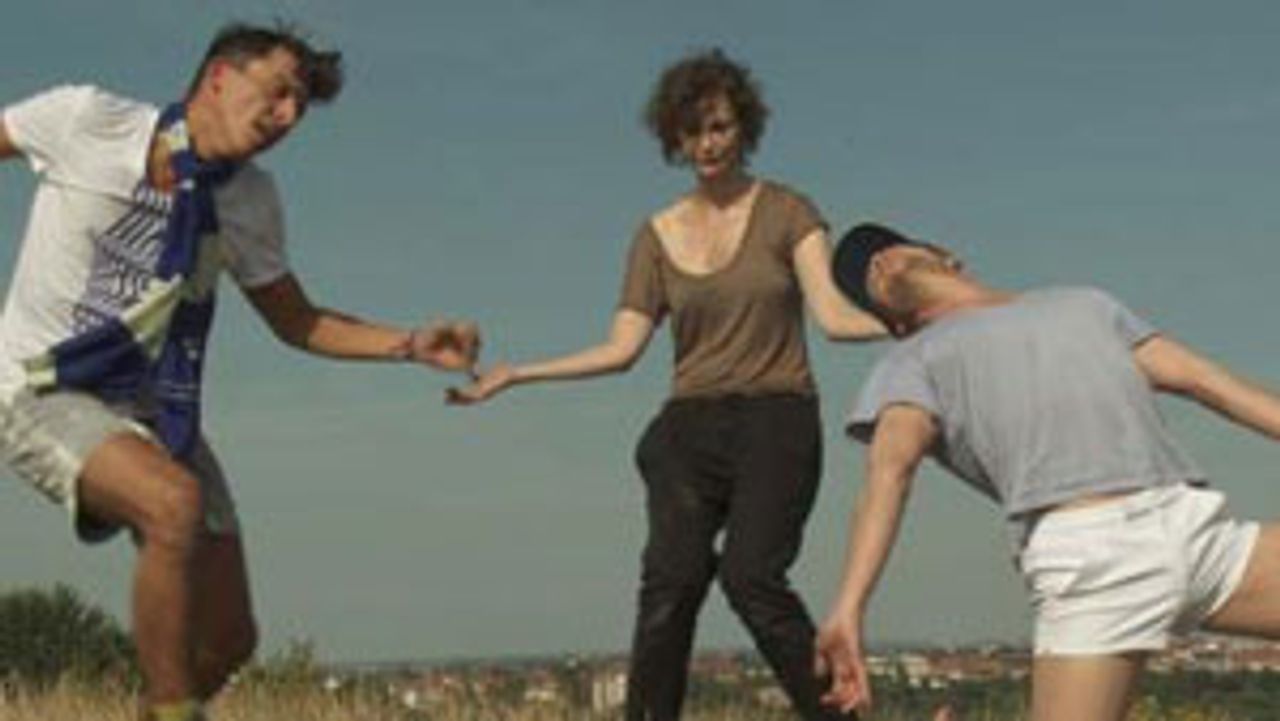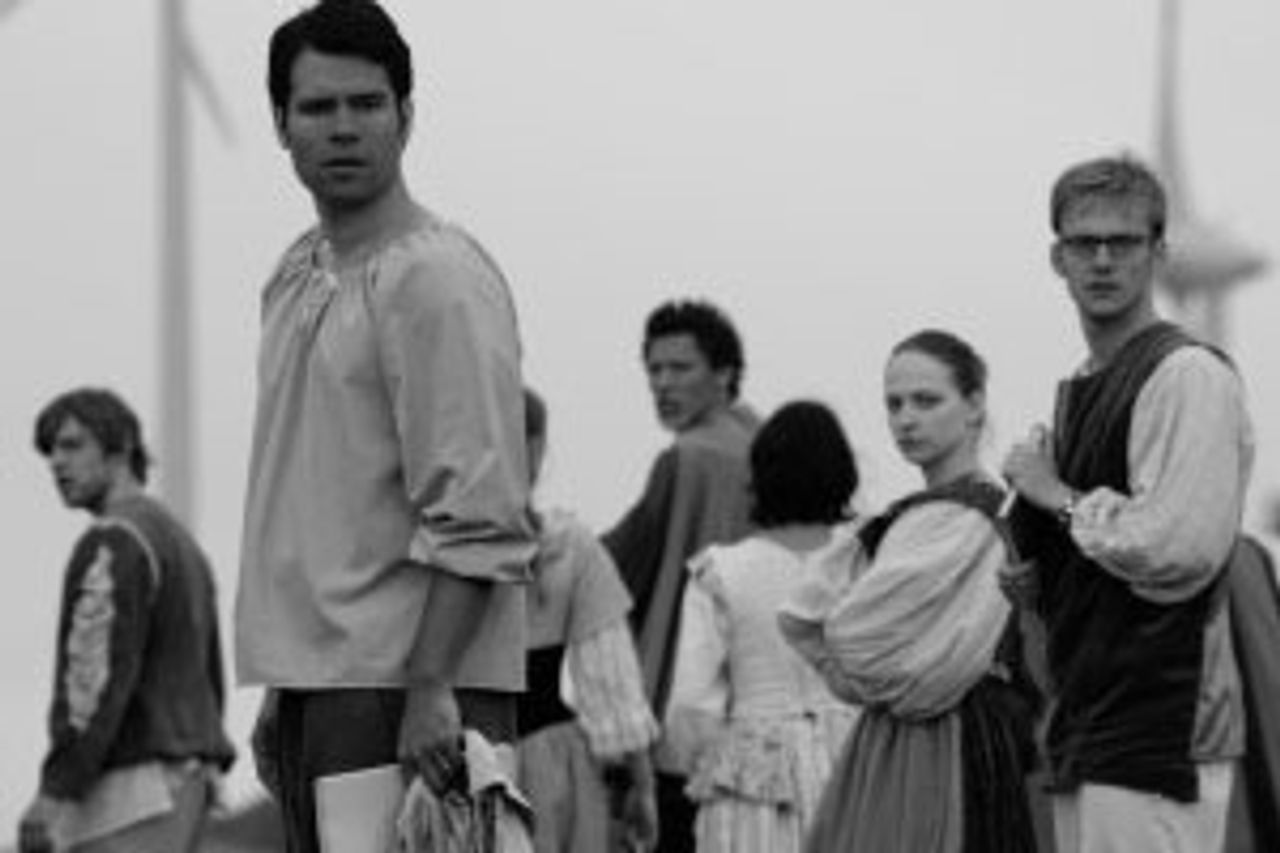This is the fourth in a series of articles on the recent Berlin International Film Festival, February 11-21. Part one was posted on February 24, part two appeared February 26 and part three March 3.
To create enduring art is a demanding process: it calls for the ability to confront painful and complex realities, and—in the face of external and internal resistance—stubbornly seek out new and surprising artistic possibilities. It means understanding and viewing oneself, to a certain extent, as a researcher, seeking to get as close to reality as possible. It is the opposite of self-absorption.
A number of trends are currently to be found in German cinema. On the whole, this year’s contributions on view at the Berlinale took a more serious tone. At the same time, one must note, there was little treatment of historical issues. Dealing with the present, the immediate, is at the core of most films and documentaries. Striking is the persistent tendency of filmmakers to undertake detailed close observation. On this basis, there were some impressive films by young directors. However, there appears to be little interest as of yet in exploring the broader social implications, and this weakened a number of films.
Documentaries
Is Germany at war? asks director Philip Scheffner in Der Tag des Spatzen (The Day of the Sparrow). He asks his provocative question at the headquarters of Germany’s Afghan mission in Potsdam (outside Berlin), and as he tracks down various military bases in Germany, training facilities for Afghanistan, and talks to residents in the surrounding area and those who have left the army. Many of the latter were attracted by the prospect of earning a fast buck, he learns. One former soldier reports how he once almost shot an innocent Afghan butcher out of fear.
 Der Tag des Spatzen (The Day of the Sparrow)
Der Tag des Spatzen (The Day of the Sparrow)The director sets himself an apparently paradoxical task in his film. Scheffner seeks to combine his love of bird-watching with an acerbic examination of the role of the army in modern-day Germany. He flies, for example, above the idyllic Moselle landscape. But this is now where the Luftwaffe (German air force) trains for landing aircraft in Afghanistan.
Eventually, we see images of a German army base that extends onto a tourist beach. Vacationers pull a dinghy across the sand—meanwhile shots are crashing around them. Some distance away, depth charges suddenly explode. It is war. Those who want to, can see it. The longer the film lasts, the more threatening the many parallel aerial shots taken in a peaceful landscape become. For a bird, there are no national borders. Afghanistan…is also Germany.
Alle meine Väter (All My Fathers) is a very private film. The viewer witnesses the young director, Jan Raiber, approaching taboo subjects in his family and learning about his three fathers. He visits each one, putting his personal tenacity and his perseverance about his family to the test. The audience responded to this fresh debut film with a strong round of applause.
 Friedensschlag—Das Jahr der Entscheidung
Friedensschlag—Das Jahr der Entscheidung (To Fight For—The Year of Decision)
Friedensschlag—Das Jahr der Entscheidung (To Fight For—The Year of Decision): Near Munich, director Gerardo Milsztein accompanies young offenders from immigrant backgrounds. After being convicted, the youths have one last chance to avoid prison by participating in the “Work and Box” programme. They come from milieus characterized by persistent unemployment and poverty. The consequences of social neglect are severe.
The various young people cannot make the simplest of decisions, are unable to concentrate for very long, and conduct their conflicts exclusively by means of violence. Much time, patience and sensitivity are required on the part of the teachers. Every day is a balancing act, and although the project works successfully, as we learn afterward, a lack of state support meant a second project was not conducted.
Die Haushaltshilfe (The Housemaid), directed by Anna Hoffmann, impresses by its unsentimental view of the hard daily work of a young Slovak home-help worker in a pensioner’s household in southern Germany. The bedridden man has to be looked after around the clock. His wife sits in a wheelchair. Finally, the young woman loses the job because for the old lady, the cheap labour was not cheap enough. But she too has to count her pennies. For many retirees, Eastern European cheap labour is the only affordable alternative to a nursing home. There are thousands of such domestic workers in Germany.
Portraits deutscher Alkoholiker (Portraits of German Alcoholics) by Carolin Schmitz, a formally very consistent film, does not follow the path of the conventional interview-based film. The human subjects, all from middle class backgrounds, remain invisible, while the accompanying images have nothing directly to do with the people concerned, but are meant to open up spaces for the audience to reflect upon—mostly dreary landscapes, repetitive movements of machinery on a busy highway. There are hardly any people, if at all, then in crowds: in the swimming pool, on the playground.
The images form a pool that generates many associations. Unfortunately, the work’s deliberate detachment tends to spoil an interesting approach. What seems certain is that alcoholism in this layer of people occurs behind the official facade, often in secret, and has something to do with loneliness.
A movie worth seeing, Fritz Bauer—Tod auf Raten (Fritz Bauer—Death by Instalments) by Ilona Ziok, concerning the state prosecutor who initiated the Frankfurt Auschwitz trial, and who died in 1968 under mysterious circumstances, will be reviewed separately.
Feature films
Unemployment has long since reached the middle classes, or what were once regarded as the middle classes. Tatjana Turanskyj’s Eine flexible Frau (The Drifter) recounts the story of Greta, a 40-year-old architect, for whom things are getting out of control since she was made unemployed. With a biting humour that Germany cinema needs more of, the movie unfolds in a series of short, strung-together scenes, visiting all the stations of the job seeker’s martyrdom: Call Center, Employment Service, Job Application Training, etc.
 Eine flexible Frau (The Drifter)
Eine flexible Frau (The Drifter)Greta proves incapable of becoming an always smiling cog in the capitalist machine. In any event, the “cogs” she encounters are all suffering. There is the administrator at the employment office, who in an idle moment takes a sip of schnapps, complaining how she has to manage the unemployed without being able to help them. The whole system is wrong. Then the official pulls herself together and is again the “professional.”
The director shows several such examples. She humorously exposes the rhetorical bubbles that have survived the bursting of the new-economic bubble, poking fun at Greta’s friends, who seek release on Sunday, dancing like free spirits on the stubble in an open field, only to assume a respectable pose again at the unpopular temporary job on Monday. But the film does not get very far. Just as Portraits of German Alcoholics ends abruptly, indicating the misery could continue indefinitely, so the form of A Flexible Woman is circular: the end is the beginning, there is no movement forward.
This seems to coincide with a widespread attitude within more educated circles in Germany at present—i.e., that entering the bourgeois working world means one becomes entirely absorbed and loses all critical faculties. Only “outside the system” is there any room for ideals. But this is just where Greta has already ended up, with greater and greater quantities of alcohol, a 12-year-old son who abuses her as a “loser,” and former architect colleagues who have discarded their professional ambitions and accuse Greta of immaturity.
Lebendkontrolle (Outside), a graduate film directed by Florian Schewe, won the “Dialogue en Perspective” prize. The short film focuses on an ex-convict, coherently, straightforwardly and without clichés, who discovers that the world outside prison is more depressing and brutal than inside. An older inmate, worried about his daughter, asks him to pick up his savings from a friend and give them to his daughter to pay for her education. However, she has fallen into prostitution, regarding him as a trick, and his girlfriend has moved away from him.
Also worthy of mention is Narben im Beton (Scars in Concrete), a 30-minute graduate film by Juliane Engelmann. Full of empathy for its characters, it depicts the immediate needs and pressure bearing down on a young mother with three children about to give birth to a fourth, desperate and without help. Again and again in Germany, cases of infanticide are reported in the newspapers.
 Barriere (Boundaries)
Barriere (Boundaries)Andreas Kleinert’s Barriere (Boundaries) was disappointing. He perhaps intended to deepen his ongoing theme, which this director who grew up behind the Berlin Wall has followed since the 1990s: the relationship between freedom and containment. Kleinert’s latest film (about an acting troupe), however, does not rise above the depiction of group dynamics and loses itself in superficial virtuosity. His most valuable film remains Wege in die Nacht (Paths in the Night, 1999).
Thomas Arslan’s film Im Schatten (In the Shadows) was also a disappointment, and will be discussed together with Benjamin Heisenberg’s Der Räuber (The Robber).
The original tragicomedy Boxhagener Platz (Boxhagener Square) by Matti Geschonneck, a film about the German Democratic Republic (GDR, Stalinist East Germany) set in East Berlin in 1968, also deserves a separate comment.
Presented this year as well were two films from the former GDR’s Berlinale: Der Aufenthalt (Held for Questioning) by Frank Beyer, withdrawn in 1982 from the Stalinist regime’s event for political reasons, and Die Frau und der Fremde (The Woman and the Stranger), by Rainer Simon, which won the main competition prize in 1985.
To be continued
